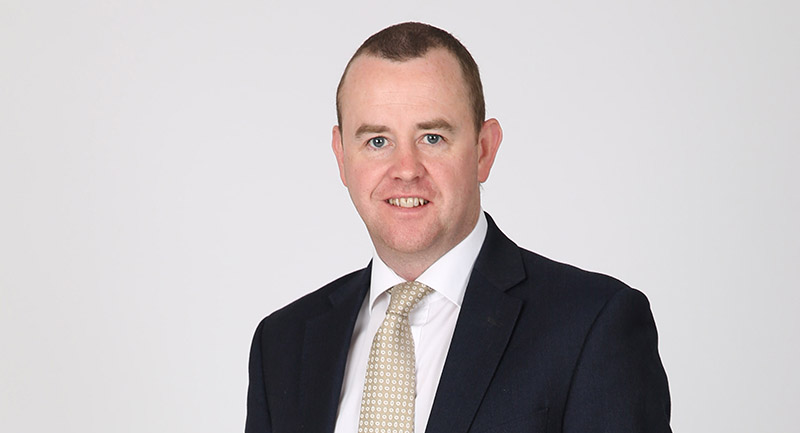By Darius McDermott, managing director at FundCalibre
COP28, the global climate conference in Dubai, recently came to a close. There is a lot of talk (and some action) on how best to allocate private and public sector funding in the fight to protect the planet, and all of us on it, from a climate crisis.
For investors thinking about how to decarbonise and make their portfolios sustainable, COP28 will set the themes that drive greater innovation in investing. Managing biodiversity is one of these.
Biodiversity is all the different kinds of life you’ll find in one area – the variety of animals, plants, fungi, and even microorganisms such as bacteria that make up our natural world – and the interconnected webs of life that bring all of these together to create essential harmony in nature.
Although it is often lumped together with climate change – an initial $1.7bn was announced on day four of COP28 to simultaneously meet climate and biodiversity goals – and biodiversity loss is partly a symptom of the climate crisis, it is an essential investment case in its own right. Some see investing in biodiversity preservation as central to undoing climate damage.
But while reducing greenhouse gas emissions is relatively straightforward to measure, “the complexities of measuring and reducing nature loss have made biodiversity a more challenging topic,” Kate Hewitt, ESG and impact specialist on the team behind the WS Montanaro Better World, explains.
One solid example of vast biodiversity risk is the high environmental impacts of food and agriculture systems, which is where significant mitigation efforts are now focused.
“As the global population continues to grow and standards of living improve, the intensity of farming is having an increasingly damaging effect on our world,” says Neil Goddin, manager of the Artemis Positive Future fund. “Biodiversity losses are vast.”
Goddin has some sobering figures to hand. We are already overusing our planet’s resources by around 1.75 times each year. Earth Overshoot Day, the day we consume more than the Earth’s capacity to regenerate those resources for that year, was 29 December in 1970. By 2000 it was 23 September. Next year, it’s estimated 25 July.
“If we all ate like Americans we would need 5.1 Earths. But we cannot be smug in the UK – if everyone on the planet ate like we do we would still need 2.6 Earths,” says Goddin.
His Artemis Positive Future fund looks for opportunities to redress the balance, like its investment in Valmont Industries, an American engineering firm. Valmont helps improve farm productivity and water conservation through precision irrigation technology, and also to strengthen energy grids from the impacts of climate change. It has a big focus on conserving resources and improving life.
The theme of food consumption and agricultural impacts on biodiversity is a global one. The Stewart Investors Asia Pacific Leaders Sustainability fund seeks out companies across Asia that contribute to positive environmental actions such as forest conservation and sustainable agriculture.
“This filters into supporting businesses that provide essentials, like nutritious food and healthcare, focusing on those that manage their resources sustainably, prevent land degradation, and empower economically disadvantaged communities,” says Clare Wood, portfolio specialist in sustainability on the fund.
Vitasoy, a Hong Kong-listed company, is one such holding. It produces over 300 plant-based items such as soy and nut milks, tofu, teas, and juices, as sustainable alternatives to sugary drinks, with soybeans that require less water and resources than meat or dairy, easing natural resource strain and biodiversity loss.
“While soy cultivation is linked to deforestation and genetic modification, Vitasoy is enhancing its sourcing policies and farmer standards, committing to non-GMO, often organic, soybeans,” Wood points out.
Climate change initiatives tend to be addressed globally at the macro level. As the holdings already discussed show, factors contributing to biodiversity loss – land usage, supply chains, water pollution – often require more ‘micro’ regulation, strategy and investor engagement to improve behaviour.
That is the view of David Harrison, manager of the Rathbone Greenbank Global Sustainability fund: “It is something investors will have to focus on to hold management teams to account. We are seeing companies tie their strategy to UN Sustainable Development Goal 15 (life on land), for example, which is helpful,” he says.
Harrison points to consumer businesses in particular as among those addressing the issue of biodiversity effectively. An example from his fund is Unilever, where he says the company has a clear commitment to protecting diversity in its supply chain.
“The consumer sector will arguably have the most significant impact on how we manage land biodiversity going forward and it’s critical that companies are transparent about supply chains and their practices,” Harrison says. Ongoing engagement with management teams on this issue is “very important” for him.
It has been estimated the planet provides $125trn of value in ‘ecosystem services’ – food, fuel and fibre – to humanity each year. This is about 1.2 times global GDP. To preserve this enormous natural capital, it seems abundantly clear to me that biodiversity and nature-related investing will be a key part of the sustainable investing megatrend in the coming years.”









